Step 5 Mapping information flows
After you have planned how the PIA will be conducted, and identified who you will need to consult, you need to describe and map your project’s personal information flows.
The purpose of mapping information flows is to describe how your project deals with personal information. Consider using diagrams to depict the flow of information, or tables setting out the key information for different types of personal information to be used in the project. The method you decide to use will depend on the complexity of the information flows in your project. Remember that clearly mapped information flows will assist you to identify privacy issues in the next stage of the PIA process.

